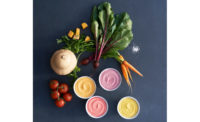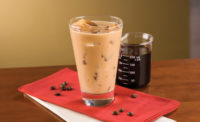Energy beverages had a rough year in 2012. The trouble started that April, when Illinois Senator Richard Durbin petitioned FDA to “take regulatory action and to address the rising health concerns around energy drinks.”
What health concerns, you ask? According to an online information page that the Journal of the American Medical Association published later that same year, energy drinks have been associated with everything from irregular heart rates and elevated blood pressure to sleep disturbances and diuresis.
As if that weren’t enough, in October 2012, the parents of a 14-year-old sued the Monster energy drink brand over the wrongful death of their daughter, which they claim resulted from the “toxic” amount of caffeine and other stimulants flooding her system after she drank two 24-ounce. Monster beverages in one day. The following month, FDA’s Center for Food Safety and Applied Nutrition released multiple adverse event reports (AERs) involving not just Monster, but Red Bull, 5-Hour Energy and Rockstar.
Six years on, the memory of it all is still enough to drive a body to the safe haven of a soothing cup of tea, or maybe a bottle of artisanal cold-brew — which is an ironic choice, given that coffee and tea may be the world’s “original” energy beverages. Millennia of history — and considerable contemporary research — support their energizing effects, and thanks to their “natural” reputation, you couldn’t find a more on-trend antidote to those “bad” energy beverages.
Nature’s energizer
And today’s beverage trends certainly point in coffee and tea’s favor. Energy drink sales increased 2.1% during the 52 weeks ending Dec. 3, 2017, according to Chicago-based IRI. But Nielsen research pegs the value of the U.S. ready-to-drink (RTD) tea and coffee market at just under $8 billion — and that market is growing at a faster 5.5% rate, primarily driven by the premium “natural” products on the market.
It all makes sense to Siddhi Thakkar, associate director, beverage business development, Virginia Dare, New York.
“Consumers tend to perceive tea and coffee as health-neutral, unprocessed and a normal part of daily life,” she said. “Whether it’s a mug of strong coffee in the morning or a cup of warm tea to wind down after a long day, these drinks have established roles that they play in the lives of consumers.”
They also have plenty of caffeine, which signals “energy” more than any other food, beverage or nutraceutical ingredient. But in the wake of the aforementioned energy-drink controversies — and as a consequence of consumers’ growing curiosity about what’s in their food and how it got there — coffee and tea’s caffeine enjoys a distinct advantage that caffeine found elsewhere does not.
“Caffeine can be derived in two ways: naturally, from various plant sources like tea leaves and coffee beans, or manufactured through a chemical process,” explained Heidi McCormack, marketing manager, Finlay Extracts & Ingredients USA Inc., Lincoln, R.I.
The caffeine in most energy drinks and carbonated soft drinks is synthetic, she said.
“Coffee and tea drinks, in contrast, offer a natural source of caffeine for an energy boost that comes direct from nature,” she noted.
Furthering functionality
Coffee and tea also abound in antioxidants such as quinines, chlorogenic acid and epigallocatechin gallate, as well as in the minerals magnesium, potassium, fluoride and more. With functional compounds such as these, coffee and tea may be more than just nature’s original energy beverages; they may be her original functional ones, too.
But even nature could use some help, which is why beverage brands are enhancing coffee and tea’s inherent functionality via savvy formulation.
“The functional beverage space continues to grow,” McCormack said.
She is seeing more interest in ingredients that deliver what she calls “focused energy:” steadier, with less of a crash.
“Elements like L-theanine are being added for this effect,” McCormack said, “and in the tea space, added caffeine and additional health benefits can be claimed simply by blending a variety of teas and herbals together in one drink.”
For her part, Thakkar has noted the appearance of standard energy-drink ingredients such as taurine, ginseng and vitamin B in some coffees, and she suspects that such products, as well as others that contribute protein, will catch on with consumers.
First, base
Indeed, McCormack is also bullish on protein’s potential in energy-friendly coffees and teas.
“Protein coffees have been a big emerging sector,” she pointed out, “and protein is being added from a variety of natural plant sources, including pea powder, coconut oil and beyond.”
It’s being added from milk, too — whether the traditional dairy variety or one of the alternative plant-based options now crowding supermarkets’ refrigerated perimeters. And milk’s appearance in energizing coffees and teas should come as no surprise, as consumers have long appreciated the creamy taste and texture it lends to the drinks. How much milk to use, however — whether adding a splash to a beverage based largely on coffee or tea, or building the drink on a milk foundation and adding coffee or tea for functionality and flavor — is a key R&D question.
“Coffee energy drinks work well in a coffee-forward format, as well as in dairy- or plant-milk bases,” said Hilary Hursh, R&D manager for coffee at Finlay.
Leaning on the coffee foregrounds its flavor and caffeine content, whereas a milk base maximizes protein levels. And though different coffee profiles may complement nondairy milk flavors differently than they would a dairy milk base, Hursh continued, suppliers can custom tailor coffee extracts to fit whatever alt-milk or dairy-milk blend they choose.
Tea, too, can form the basis of an entire energy beverage, or it can complement a dairy- or plant-milk base, said Lauren Lamareaux, Finlay’s technical director for tea.
“Tea’s flavor tends to be more delicate than coffee’s, so if the consumer is looking for more tea flavor in the beverage, a sole tea base would work best,” she said. “If the consumer is looking for a more indulgent route for a dairy- or plant-based product, tea will also work well, but the flavor will be much milder.”
Held in suspense
From a stability standpoint, Hursh’s biggest concern when combining coffee with milk is maintaining protein suspension, particularly when dairy milk is the source.
“Coffee is naturally acidic,” she said, “and the pH must be modulated with a pH adjuster or buffer system to prevent protein precipitation.”
Tea, Lamareaux said, behaves similarly in both dairy and plant milks — formulators can expect some sedimentation, but in this case, it’s the tea and not the milk proteins doing the settling. Nevertheless, Lamareaux noted that such settling is normal and can even reassure consumers that there’s actually real tea in the product. But in cases where settling isn’t acceptable, manufacturers can always formulate stabilizers into the mix to keep the tea suspended.
Blake Wester, applications scientist, Flavorchem Corp., Downers Grove, Ill., has also witnessed sedimentation in both coffee and tea beverages, and he finds the finely ground green-tea powder known as matcha a special challenge to keep in suspension.
“It tends to settle to the bottom,” he said, “and that beautiful green color turns brown.”
For these reasons — not to mention the need for UV protection — manufacturers often opt to bottle their tea and coffee beverages in opaque containers that leave any precipitate out of consumers’ view, he noted.
Wester also found that texture issues can emerge in coffee beverages that swap out dairy milk for a plant-based replacement.
“One of the biggest differences is mouthfeel,” he noted, “and I always add a hydrocolloid to help return some of the mouthfeel lost due to the lack of or reduction in fat. Also, I usually adjust my levels of coffee and add some flavors to help with some of the negative flavor notes that alt-milks can have.”
Playing to type
Sometimes the choice of coffee or tea itself can help mitigate flavor issues.
“Arabica lends a smooth coffee flavor,” Hursh said, “but Robusta works very well in energy concepts, as it naturally contains about double the caffeine as Arabica.”
Blends of both coffee types, not surprisingly, bring the best of both to the mix.
Lamareaux said that flavor preference, more than anything else, may determine which type of tea a formulator chooses.
“Black, green, oolong and more will all work well in an energy drink,” she noted, “but the flavor profile would be more dependent on the origin and terroir of the tea source. And some customers may prefer a milder, less bitter tea when formulating energy drinks because caffeine naturally has a very bitter flavor. So balance of that is key.”
As for the tea or coffee ingredient format, Wester prefers working with liquid tea concentrates for flavor consistency and lower micro counts, and cold-brew concentrates for coffee, as they produce what he judges to be superior flavor.
“However, if you’re strictly using the coffee or tea for the energy function,” he said, “standardized powdered formats are probably best, as you can get very consistent levels of caffeine or catechins.”
Hursh believes that hot- or cold-brewed liquid coffee extracts yield the best flavor in a beverage with a coffee-forward base.
“Using a cold-brew extract allows for increasing the coffee use level and natural caffeine content without negatively impacting flavor acceptability,” she added.
John Harper Crandall, vice president, sales, Amelia Bay, Johns Creek, Ga., is partial to liquid tea ingredients, as his company manufactures a brewed liquid tea with a clean label and a record of ease in use. The ingredient eliminates the time-consuming step of batch steeping and formulating with instant tea powders, he said, with the result that formulations are simply blended in batch tanks and pasteurized.
“Our extracts can be hot-filled or cold-filled for a beautiful, stable finished beverage free from sedimentation or clouding,” he noted.
The company uses a production technology that involves closed, continuous brewing and what Crandall calls “all-natural optimization methods” that lock in tea’s real flavor. That’s no small point, he added, because even though consumers are looking for clean labels, they also want good-tasting beverages.
Looking ahead
Where the category will go next is anyone’s guess. On the coffee front, Wester puts his money on nitro coffee as a logical vehicle for energy ingredients — even though it’s difficult to pull off in cans.
“Nitro done right gives you a nice creamy mouthfeel and a lightly sweet flavor that tends to mask some of the bitterness,” he noted. “I could see that as being very beneficial when adding ingredients that tend to add negative flavor notes.”
Finlay’s McCormack advocates cold-brew coffee as a clean energy option with enhanced caffeine levels and a smooth flavor and finish that don’t require the kind of masking additives that other beverages might to maintain a pleasant drinking experience.
“Cold brew really created a spark in the RTD coffee space, opening doors for even more innovation and differentiated products,” she said, “and consumers are open to the variety of places coffee can go away from traditional coffee drinks.
“There’s still a lot of room for growth,” McCormack concluded of both coffee and tea. “We’re just at the beginning of where this space can go. There’s a push for more natural, clean products, yet consumers still crave energy, experiences and enjoyment, and they’re always looking for the next new thing.”




.jpg?height=200&t=1643904656&width=200)

